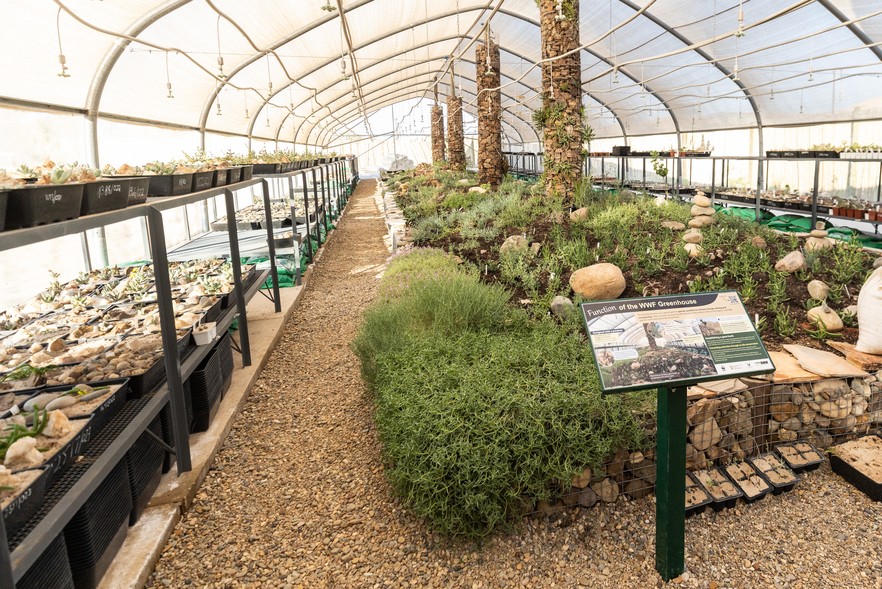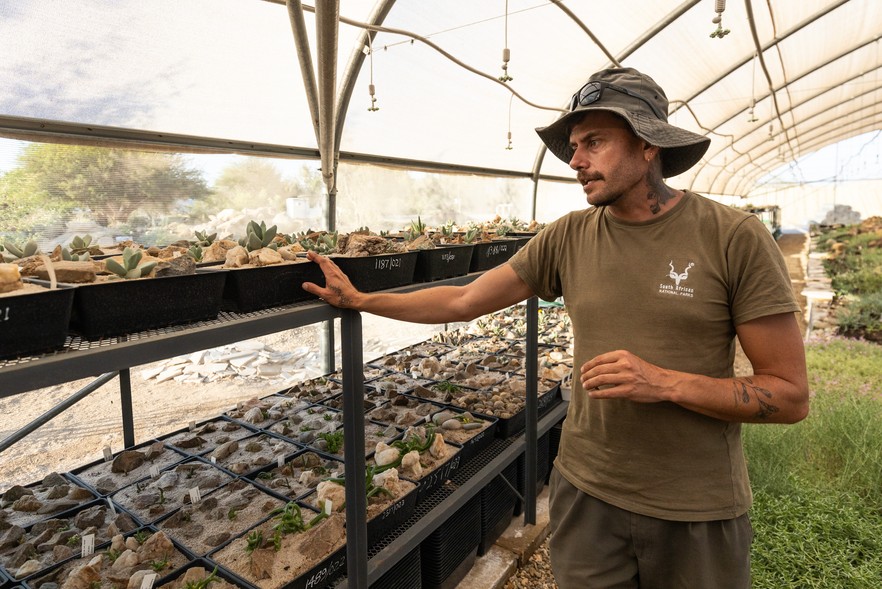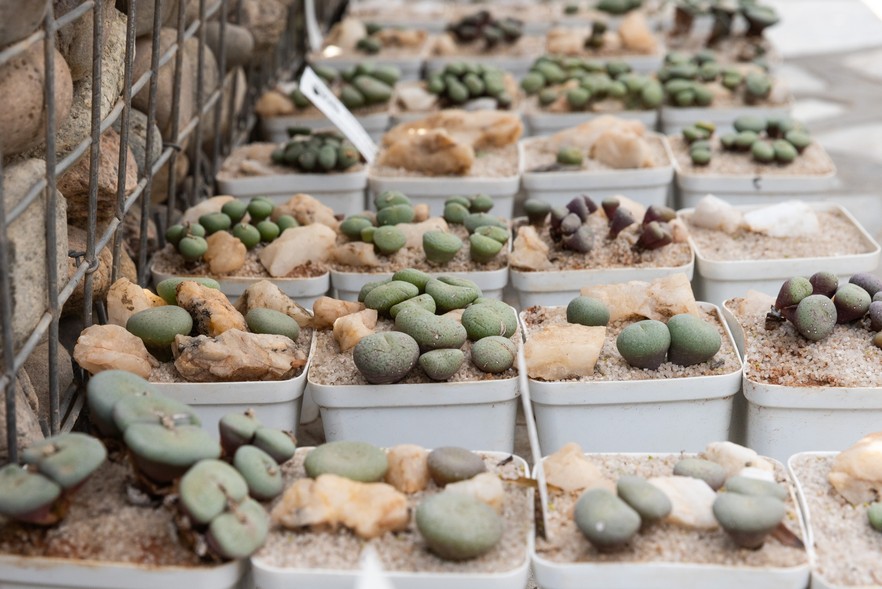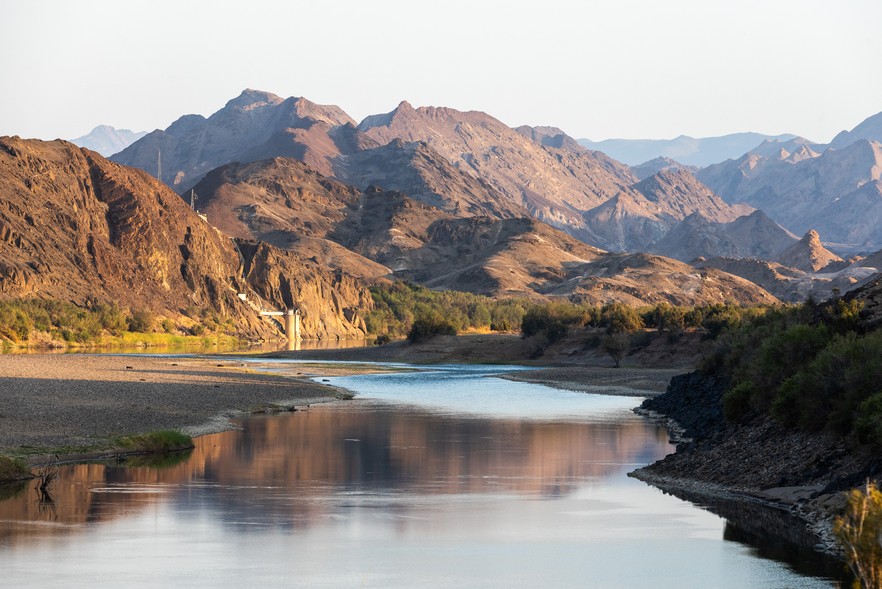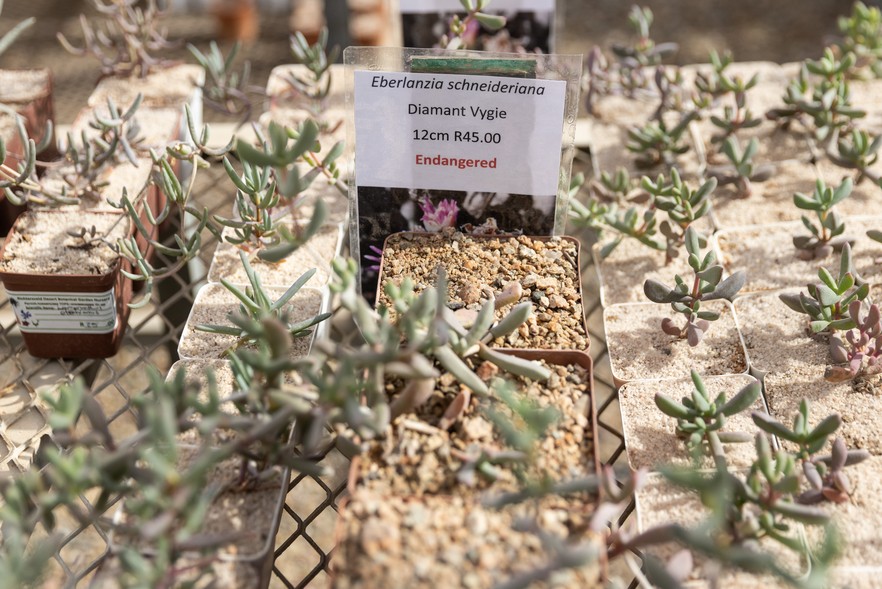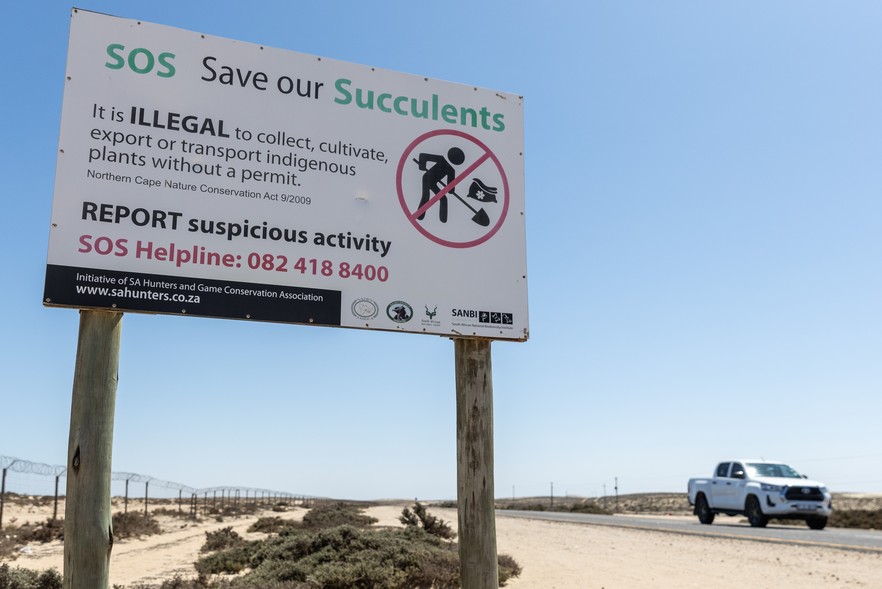Blooming good: How a desert garden is saving endangered plants
The Richtersveld Desert Botanical Garden is a lifeline for plants species endemic to the region
The Richtersveld Desert Botanical Garden, a first of its kind in South Africa, opened its doors in August. It aims to be a living bank of the endangered and threatened plant species in the region.
- Endangered succulents in the Richtersveld have been given a lifeline from poaching, mining, overgrazing, and climate change.
- The Richtersveld Desert Botanical Garden in Sendelingsdrif opened in August. It was established by SANParks and SANBI.
- The garden includes plants that have been saved and rescued from poachers and mining sites.
- SANBI said that over a million poached plants have been confiscated by law enforcement since the poaching crisis started in 2019, but that this number is declining.
It’s a first of its kind in South Africa. The new botanical garden in Sendelingsdrif is a living bank of the country’s rich succulents indigenous to the Richtersveld. Many succulents are endangered — on the verge of extinction — because of poaching, mining, climate change, and overgrazing. This garden is a beacon of hope amid the rapid decline of these plants.
The Richtersveld Desert Botanical Garden, which opened in August this year, is the country’s first botanical garden in the desert biome. Located in the Ai-Ais Richtersveld Transfrontier Park along the border between South Africa and Namibia, the garden is a partnership between the South African National Parks (SANParks) and the South African National Biodiversity Institute (SANBI).
The garden has been in the works for several years. In 2014 Sendelingsdrif, a small border town, almost became a ghost town when some nearby mines closed down. SANParks staff aimed to give the town a facelift, said Pieter van Wyk, nursery and botanical curator at the botanical garden.
Pieter van Wyk is nursery and botanical curator at the botanical garden. He says that there is a “serious problem” with plants going extinct and becoming endangered due to mining, overgrazing, poaching and climate change.
Van Wyk, a self-taught botanist, was assessing plant populations in the region when he realised that many species were going extinct.
“I quickly realised we’re sitting with a serious problem in the Richtersveld — and that was before poaching. When poaching came, it just escalated,” said Van Wyk. In 2021, there were over 400 species that had the potential of going extinct without intervention, he said.
Van Wyk said the aim of the garden is to create a living bank of these plant species currently under threat. “We already have so many species that are alive because of this facility, which otherwise would’ve been gone,” he said.
Video produced by Ashraf Hendricks
The botanical garden includes a conophytum house, which hosts hundreds of the tiny succulents, and many which are red-listed because of its demand on the black market. “Poaching has become so extreme. If these species go extinct in the wild, at least we have a backup plan to reintroduce them,” said Van Wyk.
Despite being a desert region, the garden is rich in unique flora with thousands of endemic species found in this biome. Some of the plants are single habitat species. Some have likely been wiped out in the wild in recent times because of human activity.
The conophytum house has many of the red-listed succulents. It serves as a living bank to keep the conophytum genus alive.
The garden is open to the public and includes facilities that hold plants saved from poaching, plants saved from mining sites, and a nursery that sells indigenous plants. There is also a Nama kraal, an education centre for the local community.
Van Wyk said that when the poaching crisis struck in 2019, they were quickly flooded with poached material. From 2019 to date, SANBI has received over a million plants confiscated by law enforcement. But this number only represents about a quarter of plants taken from the wild that are intercepted by law enforcement, said SANBI spokesperson Nontsikelelo Mpulo.
These plants remain with the police until legal proceedings are concluded, “after which they will be transferred to state ownership through agencies like CapeNature or the Northern Cape Department of Agriculture, Environmental Affairs, Rural Development, and Land Reform (DAERL),” said Mpulo.
The botanical garden in the desert biome. Located in the Ai-Ais Richtersveld Transfrontier Park along the border between South Africa and Namibia.
The poaching crisis has since improved, which SANBI attributes to collaborative efforts between provinces, and “harsher sentencing” especially in the Northern Cape. Last year about 200,000 plants were confiscated, and so far this year only about 30,000 plants have been confiscated.
Mpulo added that SANBI’s focus is on “developing a conservation collection and ensuring that botanical gardens across South Africa and globally can house these unique specimens, preserving them for future generations”.
Eventually, the hope is to reintroduce some of these plants into their natural habitat in the Richtersveld. “Some of the species are key species in the ecosystem,” said Van Wyk.
But there are some places where it might not actually be possible because habitats have been destroyed, such as at mining sites. “We need to protect this … It is part of our natural heritage,” he said.
The garden has a nursery that sells indigenous Richtersveld plants, including some endangered succulents.
Succulent poaching exploded in the Northern Cape in 2019.
Support independent journalism
Donate using Payfast

Don't miss out on the latest news
We respect your privacy, and promise we won't spam you.
Next: Patients cross river and bush to get to nearest clinic
Previous: How the Legal Resources Centre has fought for human rights
© 2024 GroundUp. This article is licensed under a Creative Commons Attribution-NoDerivatives 4.0 International License.
You may republish this article, so long as you credit the authors and GroundUp, and do not change the text. Please include a link back to the original article.
We put an invisible pixel in the article so that we can count traffic to republishers. All analytics tools are solely on our servers. We do not give our logs to any third party. Logs are deleted after two weeks. We do not use any IP address identifying information except to count regional traffic. We are solely interested in counting hits, not tracking users. If you republish, please do not delete the invisible pixel.

